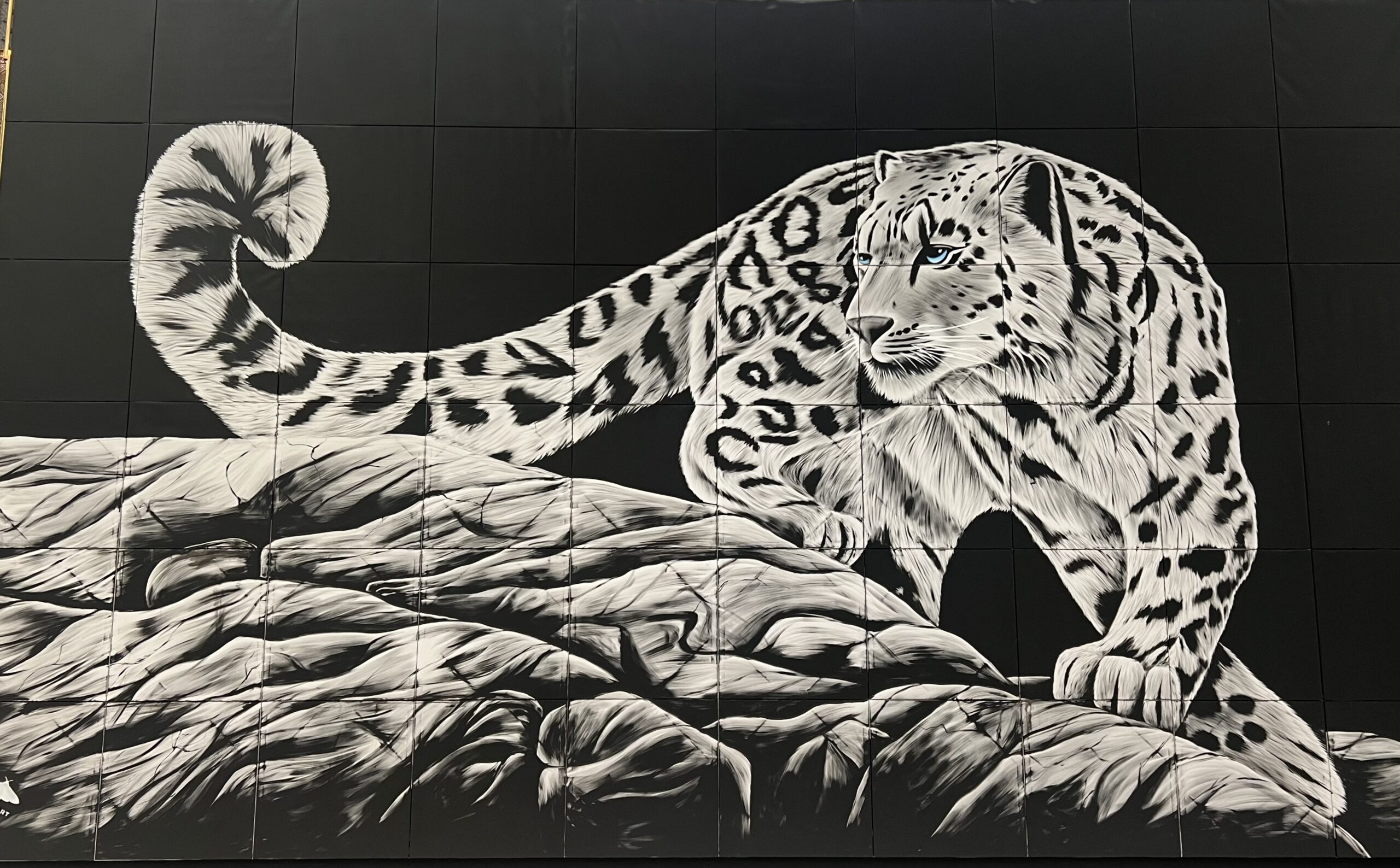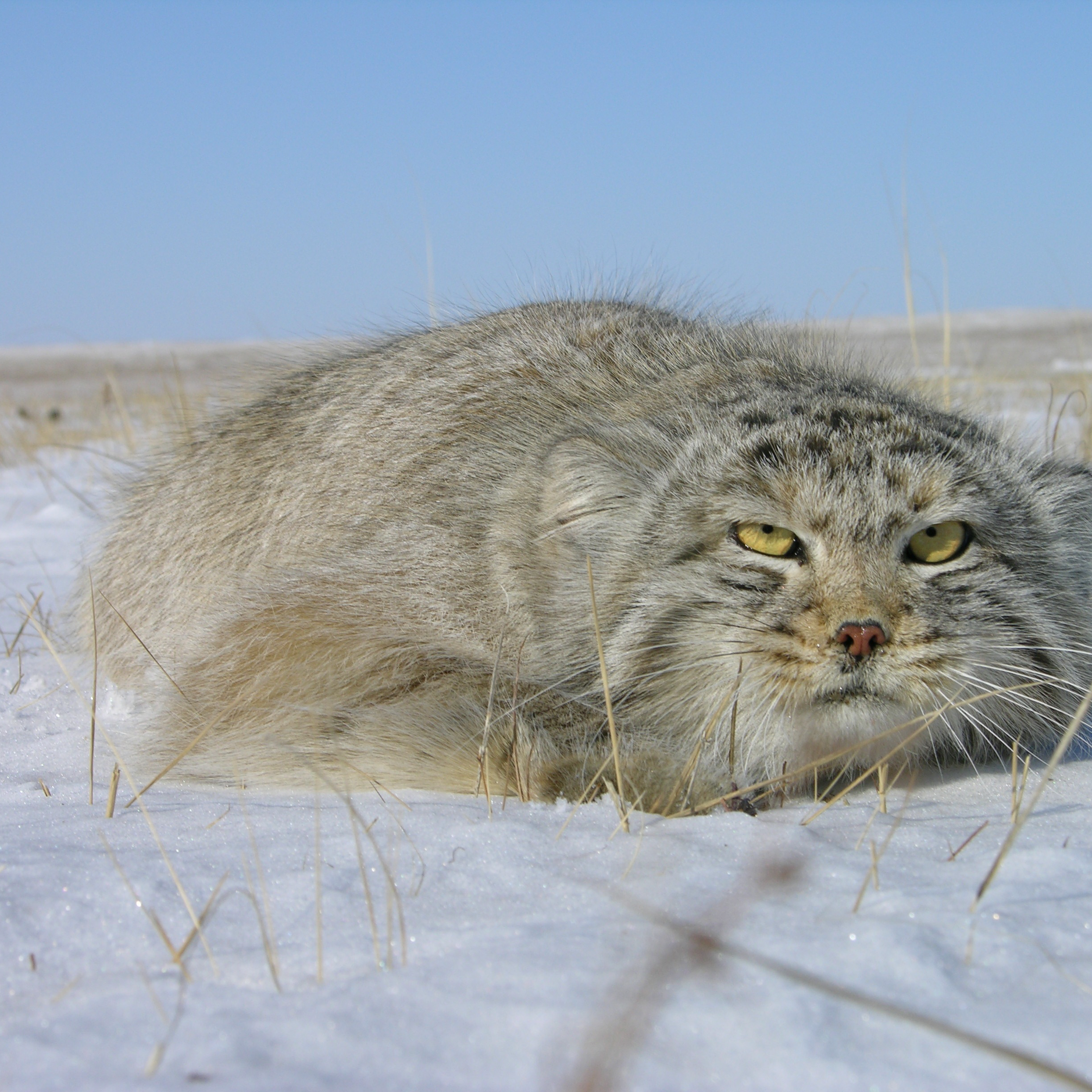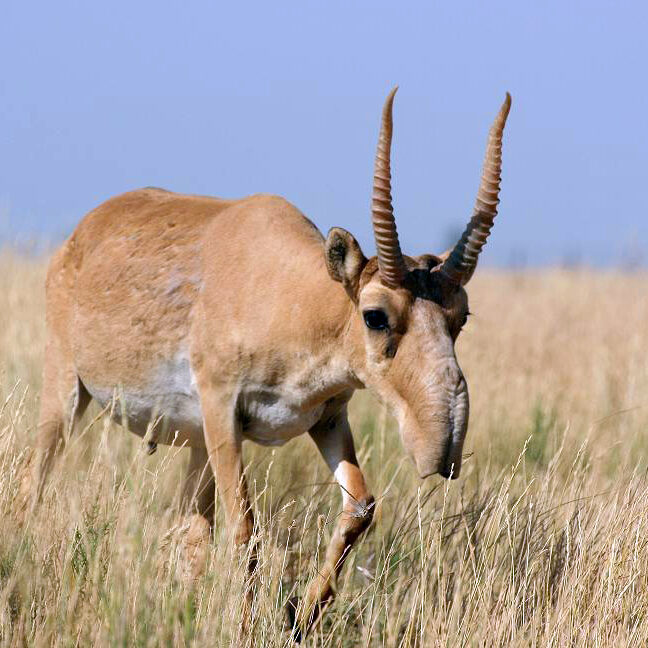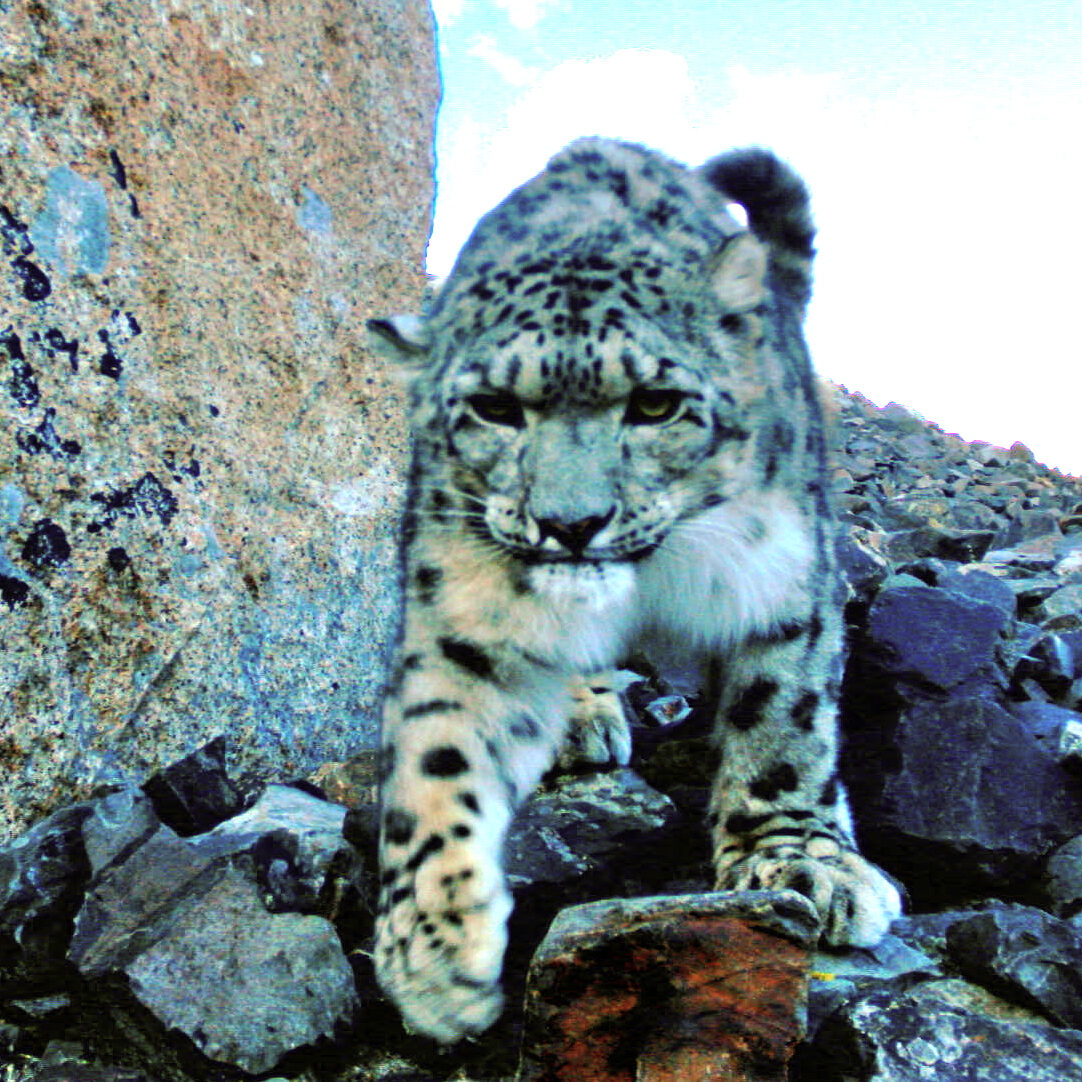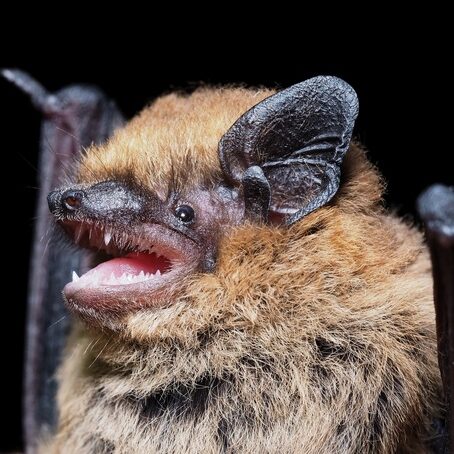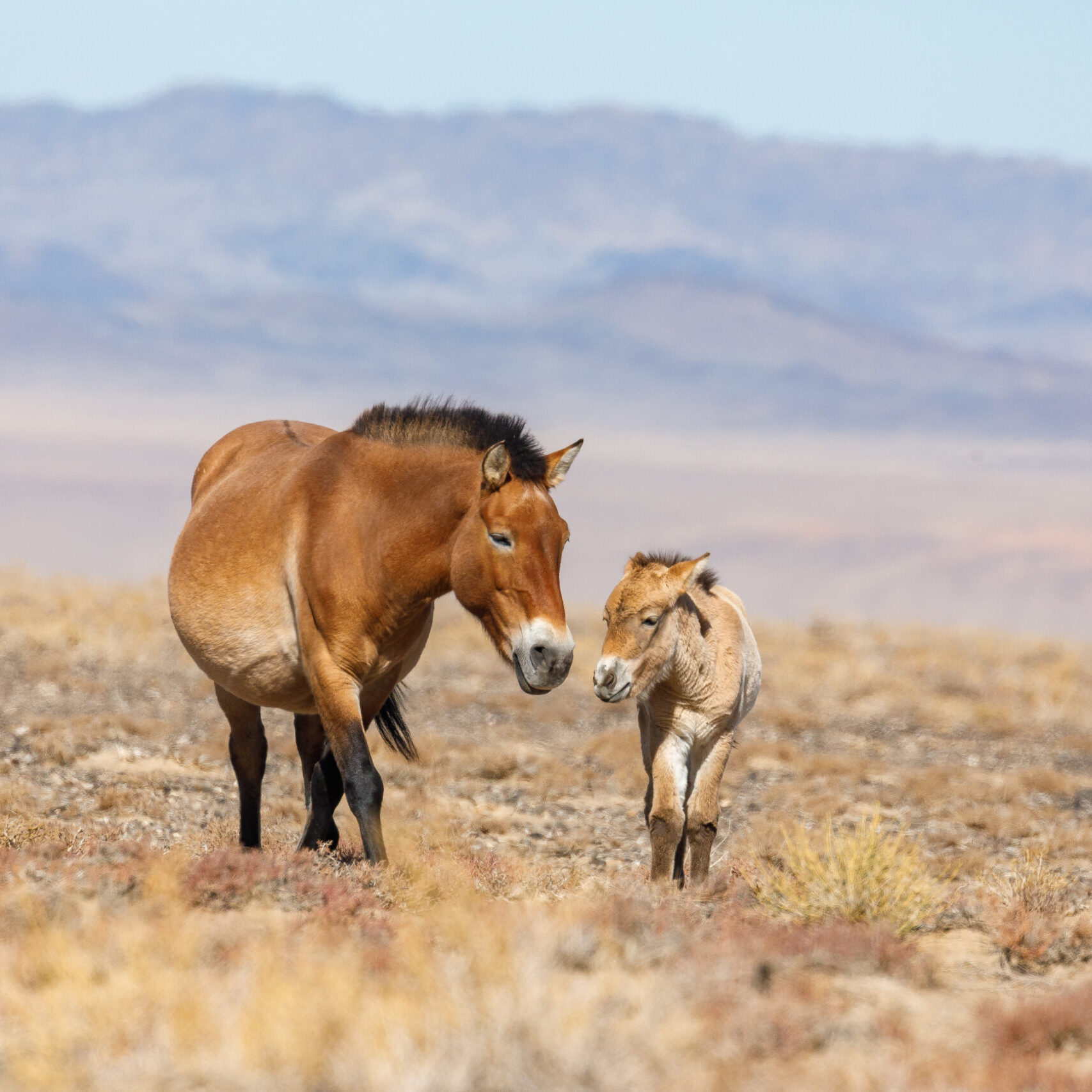Snow Leopard
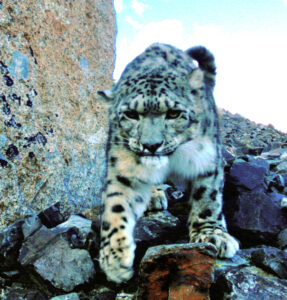 Shy and reclusive, the snow leopard (Panthera uncia) has evolved to live in some of the harshest conditions on Earth. Insulated with a thick fur that serves as a natural camouflage and equipped with wide feet that act as natural snowshoes, the big cats are perfectly suited to live in the steep and rugged landscapes of their high-altitude homes in mountains across a vast range of Asia. Tremendous jumpers, the snow leopard can leap as far as 50 feet.
Shy and reclusive, the snow leopard (Panthera uncia) has evolved to live in some of the harshest conditions on Earth. Insulated with a thick fur that serves as a natural camouflage and equipped with wide feet that act as natural snowshoes, the big cats are perfectly suited to live in the steep and rugged landscapes of their high-altitude homes in mountains across a vast range of Asia. Tremendous jumpers, the snow leopard can leap as far as 50 feet.
As a top predator, the snow leopard plays a crucial role in indicating the health of its high-altitude habitat as well as the impacts of climate change in mountain environments.
Scientists estimate that there may only be between 3,920 and 6,390 snow leopards left in the wild. These figures reflect an array of threats faced by the snow leopard that has caused populations to decline and has created an uncertain future for these “ghosts of the mountains.” The snow leopard is classified as “vulnerable” on the International Union for the Conservation of Nature (IUCN) Red List.
